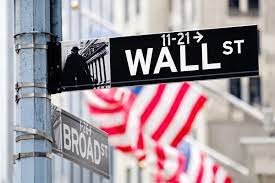Wall Street indices experienced a retreat in the face of lingering inflation concerns and the impending possibility of a US government shutdown on October 1, 2023. The Dow Jones index ended the trading day 0.47 percent lower, while the S&P 500 index followed suit with a 0.27 percent decline on Friday. In contrast, the tech-heavy Nasdaq managed to stay in positive territory, closing 0.14 percent higher.
Global equities, as measured by MSCI’s gauge, also concluded the day with a slight decline of 0.04 percent. The session was marked by choppy fluctuations as investors prepared for the likelihood of a US government shutdown and adjusted their portfolios in anticipation of the quarter’s end.
For the month of September, MSCI’s global equities index recorded a notable decline of 4.3 percent, marking its most significant monthly drop in a year. Furthermore, for the quarter, the index lost 6.6 percent, marking its first quarterly decline in a year.
Meanwhile, the price of gold saw a decline, reaching a two-month low due to the surge in US dollar rates. Investors are left pondering whether it’s an opportune time to buy or if it’s wise to wait.
According to data from CME Group’s Fedwatch tool, traders were increasingly betting on an 85.8 percent probability that the Federal Reserve would maintain steady interest rates at its upcoming meeting in November. This figure represented a notable increase from the 80.7 percent probability recorded on Thursday.
In the currency markets and wall street, the US dollar continued its remarkable performance, heading for its most substantial quarterly gain in a year. It extended its winning streak for the 11th consecutive week. Concurrently, the Japanese yen remained under scrutiny for potential government intervention.
The yen exhibited a 0.07 percent weakening against the US dollar, with an exchange rate of 149.43 yen per dollar. The dollar index, which measures the strength of the US dollar against a basket of major currencies, saw a modest rise of 0.038 percent. The euro, on the other hand, managed to gain 0.09 percent against the dollar, reaching a rate of $1.0568.
Sterling, the British pound, was last trading at $1.22, experiencing a minor 0.02 percent increase. This uptick followed data indicating that Britain’s economic performance since the onset of the COVID-19 pandemic was more robust than previously estimated.
In the US Treasuries market, benchmark 10-year yields experienced fluctuations but remained 1.6 basis points lower at 4.581 percent, compared to 4.597 percent at the close of the previous day. The 30-year bond also saw a 2.3 basis point decline, yielding 4.7065 percent. The 2-year note’s yield was last down 1.3 basis points, settling at 5.0582 percent.
As investors on the wall street market closely monitored market developments, the looming US government shutdown took center stage. Hardline Republicans in the US House of Representatives rejected their leader’s proposed bill for a temporary government funding measure. This rejection makes it increasingly likely that federal agencies will face a partial shutdown starting on Sunday.
Despite these concerns, underlying inflation pressures in the United States appeared to moderate in August. The annual increase in prices, excluding food and energy, dipped below 4 percent for the first time in over two years. This development was seen as welcome news for the Federal Reserve as it contemplated the future of monetary policy.
Additionally, earlier data showed that headline inflation in Europe was rising at a slower pace than expected, reaching its lowest level in two years. However, any initial boost to stocks resulting from signs of subsiding inflation gradually faded as the trading session progressed.












